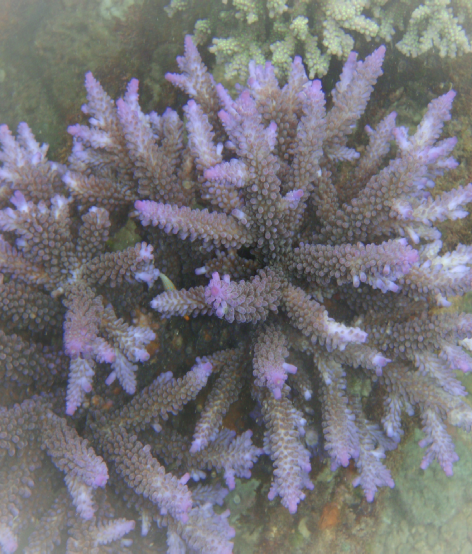Somewhere in a very remote region of the south pacific between Hawaii and Samoa lies the island country of Kiribati. Its so remote that it has been largely sheltered from human pollution, and other influences like excessive fishing and such. A Marine scientist named Enric Sala made in 2009 an expedition with the National Geographic Society to find and monitor untouched reefs that will give clues on how to restore damaged reefs elsewhere in the world. The researchers found reefs in pristine condition, sprawling with diversity. Sala describes the beauty and color “like an impressionist painting”. His team presented their findings to government officials in Kiribati, which as a result took steps to protect the coral reefs from fishing and other human activity.
That protection would not shield the waters from a heat wave in 2015 and 2016 which decimated half the coral reefs the scientists were monitoring. The news seemed devastating but the team continued their research fearing for the reefs survival. In 2021 they went back to update their survey on the reefs and were surprised to find much of the damaged reef colonies thriving and seemingly recovered from the heat damage. The reef had recovered by its own and was as vibrant and diverse with fish and coral, that did not die off. The numbers of surviving coral were large enough to help repopulate the reef. Scientists attribute the recovery largely to the thriving fish population that was very strong as a result of the protective fishing ban. The fish were apparently eating the algae and functioned as a cleanup crew to keep the dead coral free of growth so new colonies could emerge. This effect is not seen in other places that are plagued by commercial fishing. In the Caribbean reefs don’t recover so easy when coral structures get choked out by a thick carpet of algae that makes it very hard for new coral growth to take root. Sala explains that the protection from overfishing allows the ecosystem to become more resilient.
His team found that protecting a region from fishing helps surrounding areas with replenishing the populations. So protection in one regional location can have great positive effects nearby and actually help the fishery industry. A side effect of greater biodiversity are the carbon dioxide absorption rates which in turn will help to mitigate the effects from global warming. His message seems to give some hope that conservation efforts can yield in measurable results. Conservation can be a powerful tool to protect biodiversity and provide resilience to climate change. One insight is clear to us at the coral farm. We can try to control nature to our best abilities and shape it as much as we can. But we can not be as resourceful as the symbiotic dynamics the coral reef holds. Nature in its infinite wisdom finds a way to survive. Life can indeed emerge like phoenix from the ashes. The only nagging big picture question here is, if that survival happens with or without humankind.

